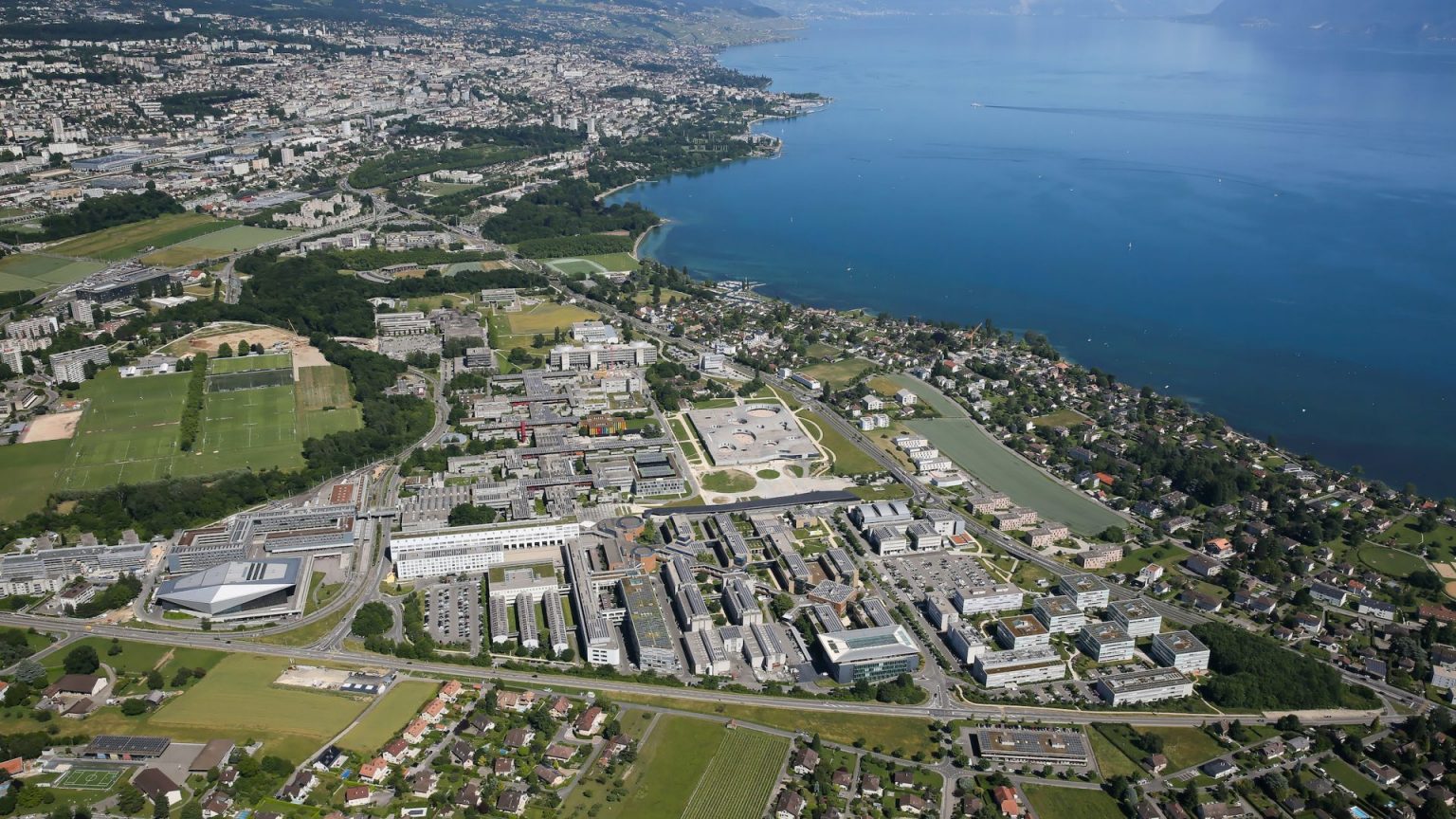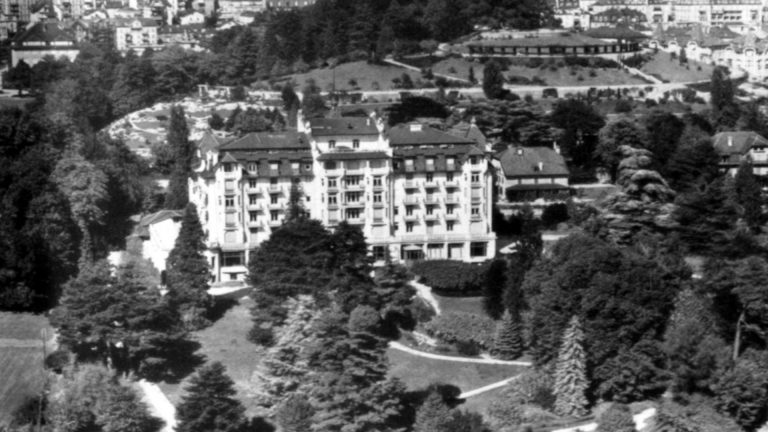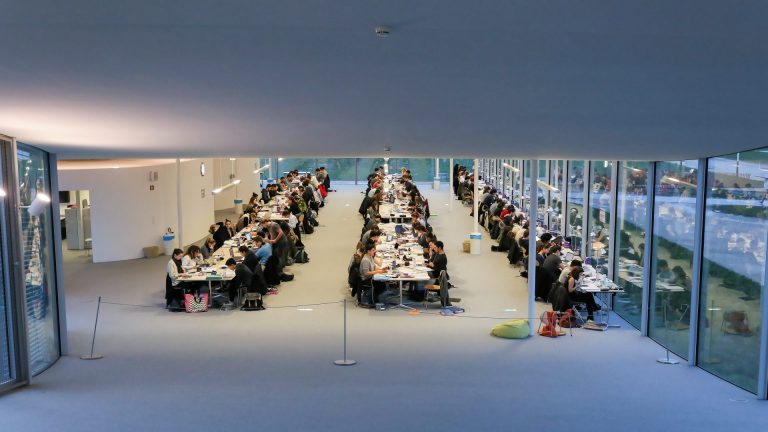1969–2019: EPFL’s stellar trajectory

When Maurice Cosandey took over as head of what was then the Ecole Polytechnique de l’Université de Lausanne (EPUL) on 1 April 1963, he didn’t have a strategy but rather a firm goal: “To turn our cantonal engineering school into a federal institute.” And that goal was reached six years later when EPUL became EPFL, the Ecole Polytechnique Fédérale de Lausanne – Switzerland’s second federal institute of technology after ETH Zurich. EPFL will be officially celebrating its 50th anniversary next year, but our history actually stretches back to the mid-19th century. We decided to mark our school’s golden jubilee with a retrospective look at what’s changed – and what hasn’t.
Today only the words Ecole and Lausanne remain from the school’s first name – Ecole Spéciale de Lausanne – in 1853. But that shouldn’t fool you: way back then, the five founders already had their sights set beyond the city. They wanted to “train excellent engineers right here in Switzerland.” That’s because otherwise young people growing up during the second industrial revolution – which saw the development of electricity and modern chemistry – would have to go to France or Germany to study engineering. The new school quickly earned a reputation for being “tough and selective,” reflecting its high standards. It gave out its first degrees in 1855, just a few weeks before its future sister school opened in Zurich.
An old idea
When Cosandey made his case for turning EPUL into a federal institute, he used much the same reasoning. “Engineering schools were springing up across Europe. We saw that everyone needed new labs and modern research equipment. I figured we would never have the resources to compete unless we became a federal institution,” said Cosandey during an October 2016 interview in EPFL Magazine.
But he had his work cut out for him. The subject had first been broached in 1903 by the head of what was then the Ecole d’Ingénieurs de l’Université de Lausanne, Adrien Palaz. In 1934 the school tried to obtain loans from the Swiss federal governmentto no avail. It took the support of two councillors – one cantonal and one federal – to finally get Cosandey’s plans off the ground. After obtaining buy-in from Vaud Cantonal Councillor Jean-Pierre Pradervand, he and Pradervand headed to the Schweitzerhof hotel in Bern where they met informally with Federal Councillor Hans Peter Tschudi, who ran the Federal Department of Home Affairs at the time. Tschudi listened carefully to their proposal and replied: “I’ll back your idea because of the excellence of your school.”
A historic moment
In 1968, both houses of Switzerland’s parliament voted unanimously to create a second federal institute of technology. That same year, the Vaud parliament unanimously approved the transfer of the school to the federal level. “I think the main thing we felt at that historic moment was pride. Even though EPFL – its new name – will no longer be a Vaud cantonal school, it will remain based in Lausanne. And looking at ETH Zurich, it’s clear that the school has been a key driver of the city’s development. I’d be surprised if the same didn’t hold true for Lausanne,” wrote Jean-Bernard Desfayes in an article appearing in the Gazette de Lausanne on 8 May 1968. EPFL was officially created on 1 January 1969.
The rest is history. The school’s federal status paved the way to an expansion program, a new building (which cost over CHF 700 million at the time) and the relocation of all teaching activities to Ecublens. Each EPFL president left his mark along the way. And the school grew to encompass more than just engineering. After having already added architecture in 1946, it eventually tacked on computer science, microengineering, communication systems, life sciences and two colleges. The school has also spread its roots in French-speaking Switzerland with satellite campuses in Geneva, Fribourg, Neuchâtel and Valais.
Digging through the school’s archives and old news articles, you can’t help but notice that many of the key issues the school faces are still the same: encouraging women in technical fields, engineers’ social responsibility with regard to new technology, ethics, how to incorporate human sciences, how the school is positioned relative to ETH Zurich, relations with local businesses, public- and private-sector financing, cooperation, the growing number of foreign students and professors, fundamental research, the role of science and engineering in our society, and supporting our region’s social and economic development – undoubtedly a large factor in the school’s success.
The more things change, the more they stay the same. Yet one thing has held constant throughout the school’s five different names and sixteen different presidents: a drive for excellence and to expand its reach beyond its local borders. Today it’s safe to say these goals have largely been reached, as EPFL is ranked one of the best universities in the world.
Article published in EPFL Magazine 20 (October 2018)
By Anne-Muriel Brouet


